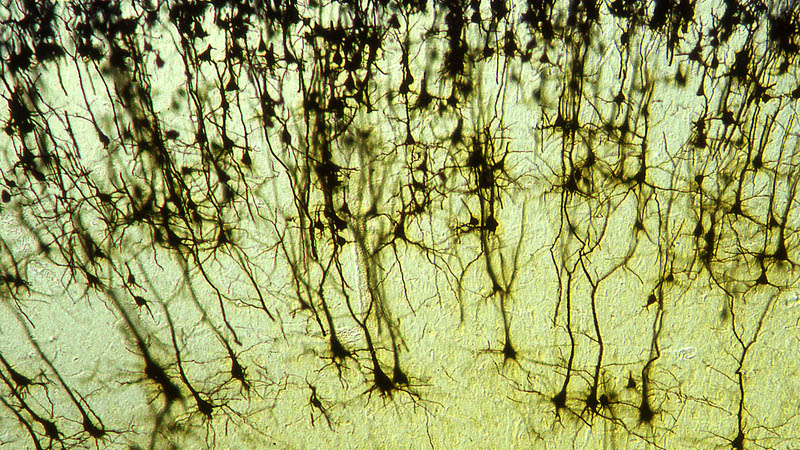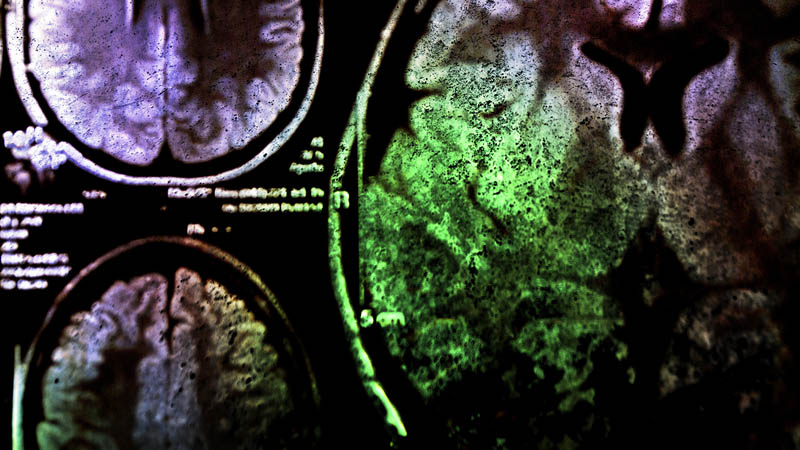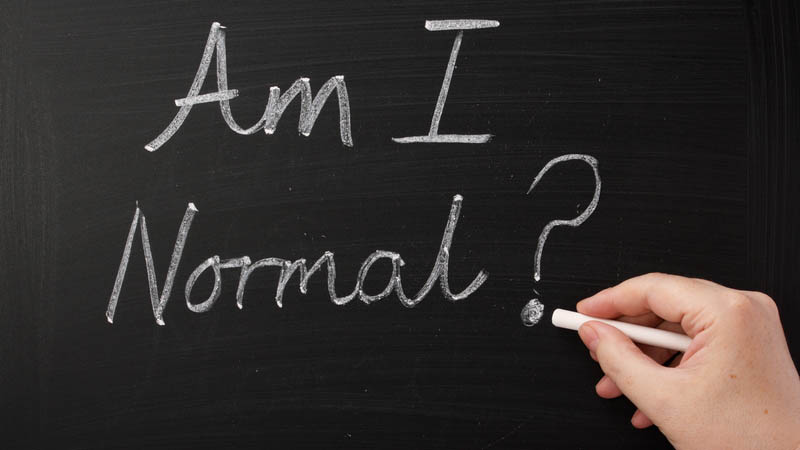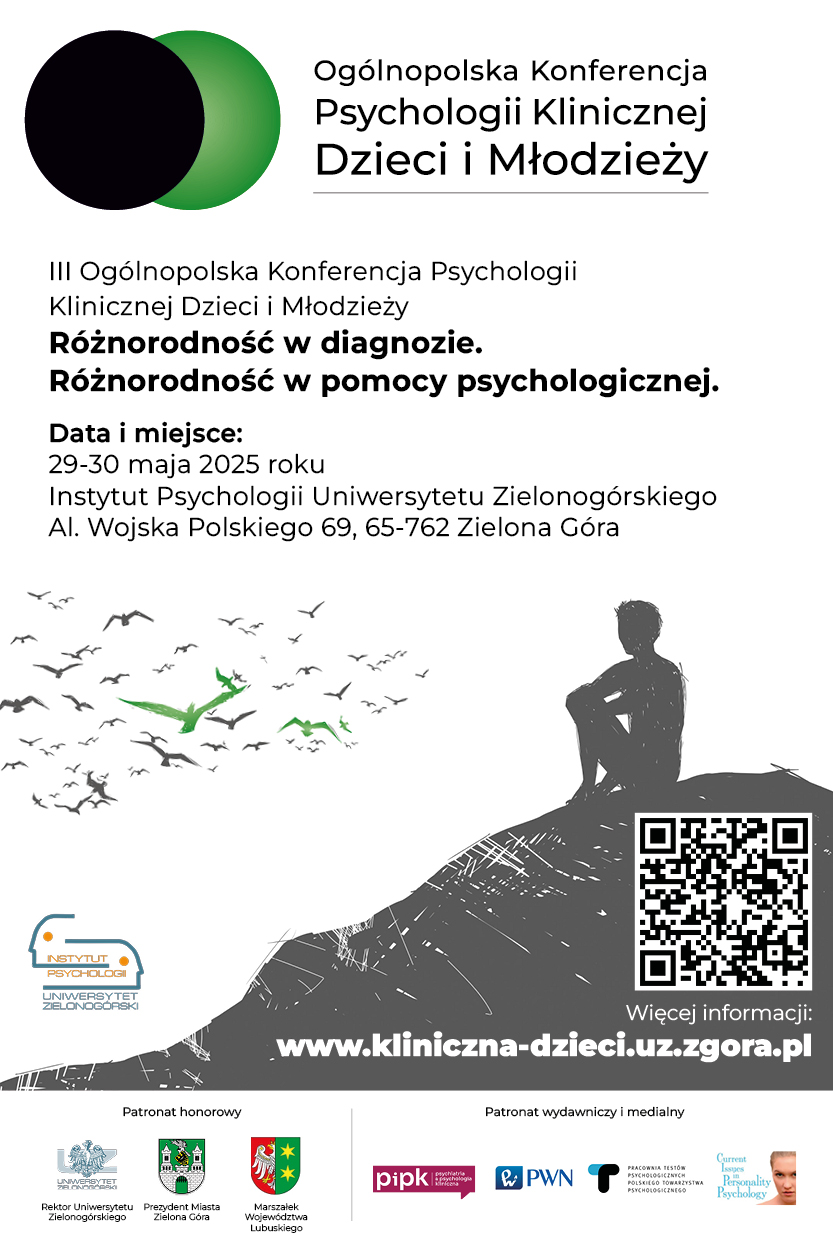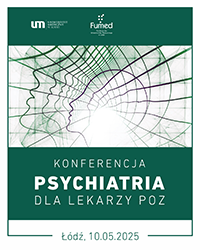Instructions for Authors
Preparation of original papers and review papers
Guidance on the Use of Artificial Intelligence
Statement of Human and Animal Rights
Statement of Informed Consent
Conflict of Interest Statement
Layout of manuscripts
Delivering the manuscripts
Peer-review procedure
Scientific reliability
Copyright
“Psychiatria i Psychologia Kliniczna” (“Journal of Psychiatry and Clinical Psychology”) is a peer-reviewed international medical journal that publishes original papers, including meta-analyses, reviews and case reports, thus contributing to the development of psychiatry and clinical psychology.
“Psychiatria i Psychologia Kliniczna” (“Journal of Psychiatry and Clinical Psychology”) also publishes updated information about the work of medical societies, including guidelines and consensus statements, as well as editorial commentaries concerning given articles, short communications, reports and materials from international congresses, letters to the editors, information about new medicinal products, abstracts and discussions on articles published in other scientific journals, book reviews and other publications.
The journal is a quarterly released in Polish and English versions.
From June 12, 2025, a publication fee of PLN 700 / 160 EUR will be introduced by the publisher of “Psychiatria i Psychologia Kliniczna” (Journal of Psychiatry and Clinical Psychology) for papers submitted to the Editorial team.
Preparation of original papers, reviews and case reports
The manuscripts submitted for publication in the “Psychiatria i Psychologia Kliniczna” (“Journal of Psychiatry and Clinical Psychology”) should be prepared in the MS Word program using font 12 (e.g. Arial, Times New Roman) with line spacing 1.5. The approximate recommended volume of a paper (without the title page, abstract, tables, figures and references etc.):
- 2,000 words for an original paper;
- 3,000 words for a review;
- 1,500 words for a case report;
- 1,500 words for a short communication – describing the preliminary results of empirical studies of special importance, the course and the preliminary results of original empirical studies;
- 1,000 words for a letter to the editors and editorial comments.
Measures and denominations should conform to the international system of units (SI).
All abbreviations and acronyms should be explained at their first use in the text. No acronyms are allowed in abstracts.
Figures and tables should not be included in the text, but their ultimate location should be indicated, e.g. (Fig. 1), (Tab. 1). A figure legend should be presented on a separate page (beneath the references) and the tables should be placed at the end of the paper, after the figure legend, each table on a separate page. The number (using Arabic numerals) and title of the table should be placed above that table. All acronyms used should be explained under the table as footnotes. Only high-quality figures are accepted for printing, i.e. in the *.eps, *.ai, *tif, *.bmp or *.jpg formats with the resolution of 300 dpi and 8 or 16 cm wide (respectively for single or double columns). Color photos should be prepared in CMYK mode and graphs – in Word, Power Point or Excel programs. No inscriptions on the photos should be made; only symbolic markings are acceptable, such as arrows, crosses or arrowheads, which must be sufficiently large and legible. Their explanations should be included in the figure description.
In the case of submitting the figures already published in another journal, a written consent of the copyright owner is required for their repeated use.
First author on behalf of all co-authors declares that the manuscript has not been concurrently submitted for publication in a different periodical and that no significant part of it has ever been published in another journal.
Guidance on the Use of Artificial Intelligence
When submitting a manuscript for publication, authors are required to disclose any use of artificial intelligence (AI)-assisted technologies (such as large language models – LLMs, chatbots, or image generators) in the preparation of the submitted work. If generative AI models are used, the corresponding author should describe their use (excluding tools for checking grammar and spelling, and for automatically formatting references) both in the cover letter (under the Authors’ Statements section) and in the relevant section of the submitted manuscript. For example, if AI was used for writing assistance, please provide a relevant description in the Acknowledgements section. If AI was used for data collection, analysis, or the generation of figures or tables, authors should provide the full protocol in the Methods section and possibly also in the figure/table legends, using the following example formula: “Source: own work using the OpenAI tool (GPT-4o), accessed on: 14 January 2025”. The tool used, its version, prompts/query statement, and the query date should be provided to enable replication of the procedure. Additionally, the content generated by AI, the method of its creation, and the name of the tool (along with its version and extension numbers, if applicable), as well as its author or manufacturer, should be clearly stated.
Chatbots (such as ChatGPT) should not be listed as authors, as they cannot be held accountable for the accuracy, integrity, and originality of the work (which are key criteria for authorship – see section Authorship); furthermore, they do not report conflicts of interest, manage copyrights (since they cannot transfer them), or handle license agreements. Authors should carefully review, verify, and edit all AI-generated content, as AI may produce authoritative-sounding results that are incorrect, incomplete, biased, distorted, or misrepresented. Their uncritical use carries the risk of spreading and amplifying disinformation, which can have serious consequences, including for public health. Authors are responsible for appropriate attribution of all sources (including original sources for material generated by the chatbot). Since chatbots can be programmed to overlook sources that contradict or challenge their generated output, authors are required to identify and include a comprehensive, objective range of sources, including those that oppose the claims made by AI. By submitting a manuscript for review, the authors affirm that the content accurately represents their own data and ideas, is free from plagiarism, fabrication, or falsification, and that they take full responsibility for any violations of publication ethics related to these issues.
The risks associated with the use of artificial intelligence also extend to reviewers, which is why chatbots should not be used when evaluating manuscripts or preparing reviews. Reviewers are required to uphold confidentiality throughout the entire review process. Inputting any part of the manuscript, abstract, or review text into a chatbot, language model, or similar tool constitutes a violation of the confidentiality agreement.
Statement of Human and Animal Rights
All experimental studies involving human subjects or animals require an approval of the local ethics committee (with respect to medical studies involving humans, authors shall conform to the principles included in the Declaration of Helsinki and with respect to experiments on animals – to the guidelines included in the Interdisciplinary Principles and Guidelines for the Use of Animals in Research, Testing and Education, issued by the New York Academy of Sciences – Ad Hoc Committee on Animal Research). A statement of the fact that the approval of the ethics committee has been obtained and its number should be included in the Material and methods section.
In the case of studies involving human subjects, their written, informed consent to the participation in the trial is necessary. A statement that such a consent has been obtained should be included in the Material and methods section, according to the principles issued by the World Medical Association – the Declaration of Helsinki. It is prohibited to use patients’ names, initials, case history numbers or any other information that would enable the identification of the patient both in the actual text of the paper and in the illustrative material (figures, tables).
Conflict of Interest Statement
If there is a conflict of interest*, the source of financing the study (e.g. number and title of a grant) should be disclosed. At the end of the paper (i.e. directly before the References), the authors should include information concerning a possible conflict of interest and acknowledgements. If no conflict of interest exists, the authors should include the following statement: The authors do not report any financial or personal connections with other persons or organizations, which might negatively affect the content of this publication and/or claim authorship rights to this publication (an example).
Title page is the first page of a manuscript – it contains the title, full first and last names of all authors, their affiliations, i.e. full names of institutions, cities and countries. Consecutive Arabic numerals placed after last names as superscripts indicate the affiliated institution, e.g. Agata Kowalska1, Małgorzata Nowak2:
1 Adult Psychiatry Clinic, Department of Psychiatry, University...
2 Department of Imaging Diagnostics, Hospital...
The address for correspondence should be provided below affiliation data and should include complete details of a contact person, i.e. first and last names, postal address, electronic address and phone number.
Abstract – the second page of a manuscript. It should contain:
- for original papers and reviews between 200 and 250 words;
- for case reports and short communications between 100 and 150 words.
The structure of the abstract of an original paper and short communications is as follows: aim of the study, material and methods, results, conclusions. Other types of papers do not require structured abstracts. In the abstract to a case report, apart from the aim and brief description of the disease history, conclusions should be mentioned as well – i.e. information concerning clinical relevance of the presented case. Acronyms and abbreviations are not allowed in abstracts.
Below the abstract, 3–5 key words should be provided based on the Index Medicus – Medical Subject Headings.
Introduction – description of the current knowledge concerning a particular subject which is concluded with the aim of the paper.
Material and methods – description of a group of patients included in the study, equipment used and statistical methods implemented. In this section, a note should be added stating that the patients’ written consent to participation in the study has been obtained and – in the case of experimental studies – the approval has been granted by the local ethics committee.
Results – should be presented in a clear and concise way, preferably in the form of tables or diagrams.
Discussion – interpretation of own results and their confrontation with literature reports.
Conclusions – presented clearly, in the form of one or a few sentences.
Conflict of interest – a statement concerning the source of financing or information about the lack of such a conflict.
Acknowledgements – thanks to persons who contributed to the creation of the paper.
References – the list of publications quoted in the paper, presented in the alphabetical order. The Harvard Referencing System should be observed, i.e. the last name of the author and the year of publication should be included directly in the text in the round brackets (Nowak et al., 2012). If more than one paper of the same author and the same year is referred to, a letter should be added, e.g. Nowak et al., 2012a. If a paper was written by two authors, both names should be referred to, e.g. Nowak and Kowalski, 2011. In original and review papers, at most 30 other publications may be referred to; in case reports and short communications – up to 15 papers. It is recommended to avoid indirect quotations and refer to original papers rather than their translations or later versions. Abbreviations of the names of other journals must conform to the Index Medicus. If the quoted paper has no more than three co-authors, they should all be listed. If there are more co-authors, the first three should be listed, followed by et al. Please observe punctuation marks, i.e. full stops, colons, spaces, etc.
Example references:
- articles:
1. Mehl MR, Vazire S, Holleran SE et al.: Eavesdropping on happiness: well-being is related to having less small talk and more substantive conversations. Psychol Sci 2010; 21: 539–541.
2. Johnell K, Religa D, Eriksdotter M: Differences in drug therapy between dementia disorders in the Swedish dementia registry: a nationwide study of over 7,000 patients. Dement Geriatr Cogn Disord 2013; 35: 239–248.
- papers published with a DOI number only:
Muradashvili N, Benton RL, Saatman KE et al.: Ablation of matrix metalloproteinase-9 gene decreases cerebrovascular permeability and fibrinogen deposition post traumatic brain injury in mice. Metab Brain Dis 2014. DOI: 10.1007/s11011-014-9550-3.
- books:
Ford JD: Posttraumatic Stress Disorder. Scientific and Professional Dimensions. Elsevier, New York 2009.
- chapters in books:Gabbard GO: Reflective function, mentalization, and Borderline Personality Disorder. In: Beitman BD, Nair J (eds.): Self-Awareness Deficits in Psychiatric Patients. Neurobiology, Assessment and Treatment. Norton & Company, New York, London 2004: 213–228.
List of Figures should be placed on a separate page beneath the references using Arabic numerals.
Tables – each on a separate page. The heading should contain the number and title of the table. The abbreviations and acronyms used should be explained below the table as footnotes.
The papers in “Psychiatria i Psychologia Kliniczna” (“Journal of Psychiatry and Clinical Psychology”) are published in English – in the electronic version on the website of the journal. Authors are encouraged to submit manuscripts in this language, possibly also in Polish (the article in Polish will be published in the printed version of the journal), but only high-quality translations will be accepted. At the request of the principal author and at their expense, the editors can send the article for translation into English (or order correction of the English version prepared by the author) to qualified translators.
The manuscripts with all their attachments should be sent via Editorial System: https://www.editorialsystem.com/pipken/.
The review procedure conforms to the recommendations of the Ministry of Science and Higher Education published in the document Good practice in peer-review procedures in science.
The manuscripts submitted for publication in the “Psychiatria i Psychologia Kliniczna” (“Journal of Psychiatry and Clinical Psychology”) are evaluated in terms of their content and formal requirements. It is assumed that all co-authors agree for the publication of the submitted paper and that the signature of the author responsible for correspondence confirms the consent of all others.
The manuscripts submitted for publication are first assessed with respect to their formal requirements by the Managing Editor. Incomplete papers or those that do not fulfill the above-listed requirements are sent back to their authors for correction. The papers that fulfill all formal requirements undergo further evaluation. Each manuscript is registered under a specific number and sent for review to two independent reviewers – recognized experts in the field the paper relates to who are not affiliated with the authors’ institutions and have no conflict of interest with the authors (kinship, professional dependency or direct scientific cooperation over the period of two years preceding the peer-review).
The Editorial Board of “Psychiatria i Psychologia Kliniczna” (“Journal of Psychiatry and Clinical Psychology”) uses the “double-blind review” model, i.e. the identity of the reviewers is not revealed to the authors and vice versa – the reviewers do not know the identity of the authors and the remaining reviewers. Nevertheless, for the sake of transparency and clearness of the procedure, in the first issue of the quarterly in a given year and on its web site, the Editorial Board publishes a list of all reviewers that evaluated the manuscripts in the previous year. The peer-review procedure lasts 2 weeks. The reviewers are obliged to provide a content-related justification for their evaluation of the submitted paper and express unambiguous opinion by selecting one of the following options:
- the paper is ready for publication without any corrections;
- the paper can be published after minor corrections have been introduced in accordance with the reviewer’s recommendations, without the need for a repeated review;
- the paper can be published after its correction in accordance with the reviewer’s comments and after a repeated review;
- the paper should not be published.
Upon obtaining a positive opinion of both reviewers, the manuscript is accepted for printing. In the case of divergent opinions, the Editor-in-Chief requests the opinion of the third reviewer. The entire editorial process does not exceed 3 months.
The Editorial Board of the “Psychiatria i Psychologia Kliniczna” (“Journal of Psychiatry and Clinical Psychology”) draws attention to the fact that the transparency and availability of information on the persons that have contributed to the creation of a paper (content-related, material, financial contribution etc.) constitutes the evidence of the researcher’s ethical attitude and of the highest editorial standards. Not only does it reflect good practice, but also is a manifestation of social responsibility.
We remind that the authors of publications are obliged to present the results of their studies in a transparent, reliable and honest way. Particular forms of scientific dishonesty are ghostwriting and guest authorship:
- the phenomenon of ghostwriting occurs, when the authors of a paper do not reveal the name of the person who significantly contributed to the creation of that paper – the name is not mentioned either as a co-author or in the Acknowledgements section;
- the unethical instance of guest authorship is a situation, when the contribution of one of the authors is negligible or none, but they are still listed as the co-authors of the publication.
The Editorial Board declares that the authors of the published papers assume full responsibility for their publications and all detected cases of dishonesty will be disclosed. The authors are asked to reveal their actual contribution to the submitted article, whereby the author who submits the manuscript assumes the major responsibility.
“Psychiatria i Psychologia Kliniczna” (“Journal of Psychiatry and Clinical Psychology”) is an open journal, available online on, among others, www.psychiatria.com.pl. It can be accessed free of charge and with no other barriers on the basis of the Creative Commons Attribution-NonCommercial-NoDerivatives License (http://creativecommons.org/licenses/by-nc-nd/4.0/) – CC-BY-NC-ND (certain rights reserved for the publisher and authors). The license allows for redistribution, presentation and preparation of the material for non-commercial purposes only, as long as it remains in its original form (without creating derivative works). The journal allows the author(s) to hold the copyright and retain publishing rights without restrictions. When deciding to publish an article in “Psychiatria i Psychologia Kliniczna” (“Journal of Psychiatry and Clinical Psychology”), the author consents to its redistribution on the aforementioned terms and guarantees that the article does not infringe the rights of the third party.
* Conflict of interest exists when at least one of authors is connected, e.g. financially (by investments, employment, counseling, royalties etc.) with the institutions which might have an influence on his/her independence and objectivity. If a paper assesses particular products that are partially or entirely sponsored by commercial companies, the authors are obliged to disclose this fact.






